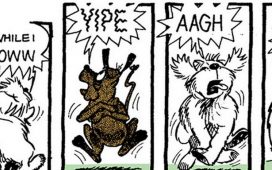Ruth King (not her real name) can still remember the call coming through on her mobile. She thinks of that moment as “the start of hell”. “It was four years ago, but I remember it clear as day,” she says. “It was my friend warning that there were videos of me everywhere. Her husband worked at a local factory and pornographic videos of me were being shared between all the workers.”
King’s instant response was to vomit. “I was working with my dad – he’s an old-fashioned type of guy, so what could I say? I told him I wasn’t well and went home.” Almost as soon as she got there, another friend, a builder, called to tell her the same videos were being passed around his building site. “He said: ‘I didn’t believe they were of you, Ruth, but I looked and they are.’”
Seven videos had been posted on porn sites by King’s ex-partner. When she looked online, they had been shared tens of thousands of times. “The comments underneath were disgusting – men describing what they’d do to me,” says King, who is now in her late 30s and a mother. “I live in a rural area where everyone knows everyone and my life has never been the same since. It’s torture for the soul.”
The government’s recent decision to review the laws surrounding so-called “revenge porn” is acknowledgment that the current provision is no match for this ever-evolving crime. Campaigners have flagged up an alarming list of shortfalls. It is still not even categorised as a “sexual offence” – although to victims, it can feel every bit as violating. Sentences are light and prosecutions rare, requiring proof of “direct intention to cause distress” (which means perpetrators who claim they posted the images for a laugh are off the hook). Fake Photoshopped porn isn’t covered at all – no matter how convincing.
The UK’s sole specialist support is the Revenge Porn Helpline, which has a staff of three (only one of whom is full-time). It takes calls from victims in extreme distress, who are often suicidal, and works flat out to remove content before it spreads across multiple platforms.
Although the number of revenge porn cases reported to the police has more than doubled since 2015, experts believe it is impossible to estimate their true scale since most victims do not seek help. One nationwide study in New Zealand suggested 5% of adults have experienced it; another in the US put the figure at almost 13%. Calls to the Revenge Porn Helpline indicate that 70% of victims in the UK are women.
Clare McGlynn, professor of law at Durham University, believes the whole area is underestimated and poorly understood. She points out that the very term revenge porn is inaccurate, failing to highlight the range of motives behind it, and painfully insensitive to victims. (“Revenge” implies the perpetrators have been somehow wronged – and should the victim’s images be labelled “porn” without consent?)
McGlynn worked on the most comprehensive study to date of the impact that image-based sexual abuse has on victims – Shattering Lives and Myths was launched in parliament in July.
“What really came across was the social rupture – how it divides lives into ‘before’ and ‘after’,” she says. “Some women lost jobs, relationships. They were isolated from family, friends, they withdrew entirely from the online world. And that was constant, an almost daily threat hanging over them. They’re always rediscovering it, or waiting for it to be redistributed. They see no time when the abuse will be over.”
King ironically refers to it as “the gift that keeps on giving”. The videos of her had been created when she had separated from her husband and become involved with an abusive man for nine months. This is something else that comes through in the Shattering Lives report. These images are often taken against a backdrop of coercion and the threat of distributing them is a means of control. Half the women in the report believed this was their partner’s primary motive.
“He swept me off my feet,” says King. “At the beginning, I was besotted and that’s when he asked for videos, telling me exactly what he wanted me to do. I can, hand on heart, say it’s not something I’d have even thought to do on my own.”
The relationship soured fast. The man was controlling and then violent, once strangling King to the point of her passing out. One evening, the couple were watching TV when he plugged in a memory stick and videos appeared on the screen. “He was quietly showing me how much damage he could do if I left him,” says King. “But I still had to get out. My life was in danger.” When she ended the relationship and reunited with her husband, the texts started – more than 100 a day threatening to share the videos. Finally, he did.
“First, my survival instinct kicked in,” says King. “I called the police who told me they couldn’t prove it was him because the videos had been shared hundreds of thousands of times. The Revenge Porn Helpline helped me remove videos – and each time I’d feel elated – but within a day, they’d be back, posted with a different title. “I changed my whole look,” she says. “I isolated myself, and stopped going out almost completely. I couldn’t even collect the children from school. My husband did everything. He’s quite high up in a local business and his staff all saw the videos, too.
“Everyone saw them,” she continues. “Two years after the first post, an older man I’d known my whole life came up to me and told me he’d like to see what I was like in real life. I couldn’t speak. I was like a frightened rabbit. It’s continual – not one incident like an assault that finishes, so you can try to recover.”
In 2017, King says, it all became too much. She tried to kill herself and ended up in hospital. “It feels really selfish now, but I couldn’t cope. There’s no end and no escape because the web is worldwide. You feel so, so exposed.”
Mikala Monsoon, 23, a makeup artist from Glasgow, understands this all too well. She describes the feeling as “like one of those dreams when you’re naked in a glass chamber”.
Monsoon was 17 when she sent the pictures that are still resurfacing six years on. “I was at a very low point in my life, flirting with a couple of people on Tinder,” she says. She doesn’t know who posted the images, but about a year later, a friend messaged to say: ‘This is embarrassing, but I felt I should tell you I found this.’ The attached link took Monsoon to a porn site displaying a picture of her alongside her full name. She had it taken down, but every few months, someone would contact her to say they had found it again.
“It was mortifying,” she says. “Each time, I’d spend a month obsessively Googling my name several times a day, finding stuff. I was really wary of people looking at me or talking to me and still am. I was in a cafe yesterday and these men were staring the whole time. Was it because they’d seen the picture?
“It never goes away. What if I applied for a job and my employers Googled my name? Or if I wanted a future in the public eye? Would everything link back to it for ever?” While King changed her appearance, Monsoon changed her name and moved cities.
But this year Monsoon decided to go public. Someone had found the picture on a file-sharing site that contained hundreds of folders and thousands of explicit images – Monsoon was in the “Glasgow Girls” folder and there were folders for cities across the UK. “This time, I got really angry. I was sick of it,” says Monsoon. She wrote an Instagram post about it and was inundated by messages from other women who had experienced the same thing. She set up a website revengeonrevengeporn.com and started a petition to force companies to ensure consent before uploading explicit content.
“I used to keep very quiet about it, but now I’m a bit more empowered,” says Monsoon. “I refuse to be ashamed. People think it’s OK to say: ‘You shouldn’t have taken the pictures.’ Would you tell a rape victim she shouldn’t have worn a short skirt?
“I’m in a relationship now and if my partner and I are apart and I want to send him a picture, I’ll do it. Telling women not to take a photo isn’t the answer,” she says. “Some women are coerced into it. Others have their pictures taken when they’re asleep or in the shower, without their knowledge. You can end up on deep fake stuff that everyone believes is real. You just need to exist to become a victim.”
Folami Prehaye, 49, an HR/quality audit manager from Bristol and a mother of two adult children, is another victim who firmly rejects shame and blame. “A lot of people have said: ‘Why did you take the photographs?’ but, at the end of the day, that ain’t the crime,” she says.
In 2012, Prehaye’s pictures were posted by an ex-partner on to multiple porn sites as well as a fake Facebook account in her name – with friend requests sent to all her friends. She went straight to the police – and although Monsoon and King found them unhelpful, Prehaye’s experience was more positive.
“I had to sit opposite this officer while he clicked on every link,” she says. “I thought: ‘Folami, you know what? You’ve had two children. It’s a means to an end. Just deal with it.’”
This wasn’t always easy, of course. Her colleagues saw the pictures and she was sent on “gardening leave”. (She has since changed jobs.) “There were times I wouldn’t go out and I couldn’t eat; I stayed at home hooded up.”
Her ex was charged and received a six-month suspended sentence. Since this abuse is not categorised as a sex crime, Prehaye had no automatic anonymity (something she and other campaigners are trying to change) and a local paper reported the details, including her name. “Then another journalist requested a full interview and I asked my children what they thought. They said: ‘Mum, you’ve got an opportunity here …’
“I didn’t want to run and hide and be sitting on a beach at 70 only to be told that someone has found a photo of me again,” says Prehaye. “I couldn’t live like that. Speaking out was about taking back control.”
Prehaye gave the interview, then set up a website, voic.org.uk (Victims of Internet Crime). She is regularly contacted by victims from across the world. “For me, it’s part of the healing,” she says. “Some people go to counsellors, but I didn’t. If I help one person by sharing my story, then that helps me too.”
“Taking on a public persona can be hugely empowering,” says McGlynn, “but that’s only ever going to be an option for a very small number.” For most victims, the impact of speaking out on their children, partner and careers would be too great.
Sophie Mortimer, the manager of the Revenge Porn Helpline, says what helps victims most is swift removal of images and access to justice. “It makes a huge difference when the police take it seriously, the case is prosecuted and society acknowledges what happened is very wrong, instead of blaming you,” she says.
King was helped by two years of therapy and the support of her husband. “Without him, I wouldn’t be here,” she says. “It has caused him so much trouble and he has never once used it against me.” She also found support in surprising places. “One woman I barely knew crossed the road to speak to me. She said that what happened to me was awful and how sorry she was. Things like that really helped.”
King plans to tell her daughter the full story when she starts secondary school. Until then, she is staying anonymous. “Some days are better than others,” she says. “It’s a work in progress, but manageable.” King does the school run now, and is able to walk past groups of men without giving into the urge to run away.
Most importantly, she hasn’t searched for the videos in more than a year. “They’re still out there and if I looked, I’d find them,” she says. “For your own survival, at some point, you have to stop.”
• The Revenge Porn Helpline can be reached on 0345 6000 459. In the UK, Samaritans can be contacted on 116 123 and the domestic violence helpline is on 0808 2000 247. In Australia, the crisis support service Lifeline is on 13 11 14 and the national family violence counselling service is on 1800 737 732. In the US, the suicide prevention lifeline is 1-800-273-8255 and the domestic Violence hotline is 1-800-799-SAFE (7233). Other international helplines can be found at www.befrienders.org













